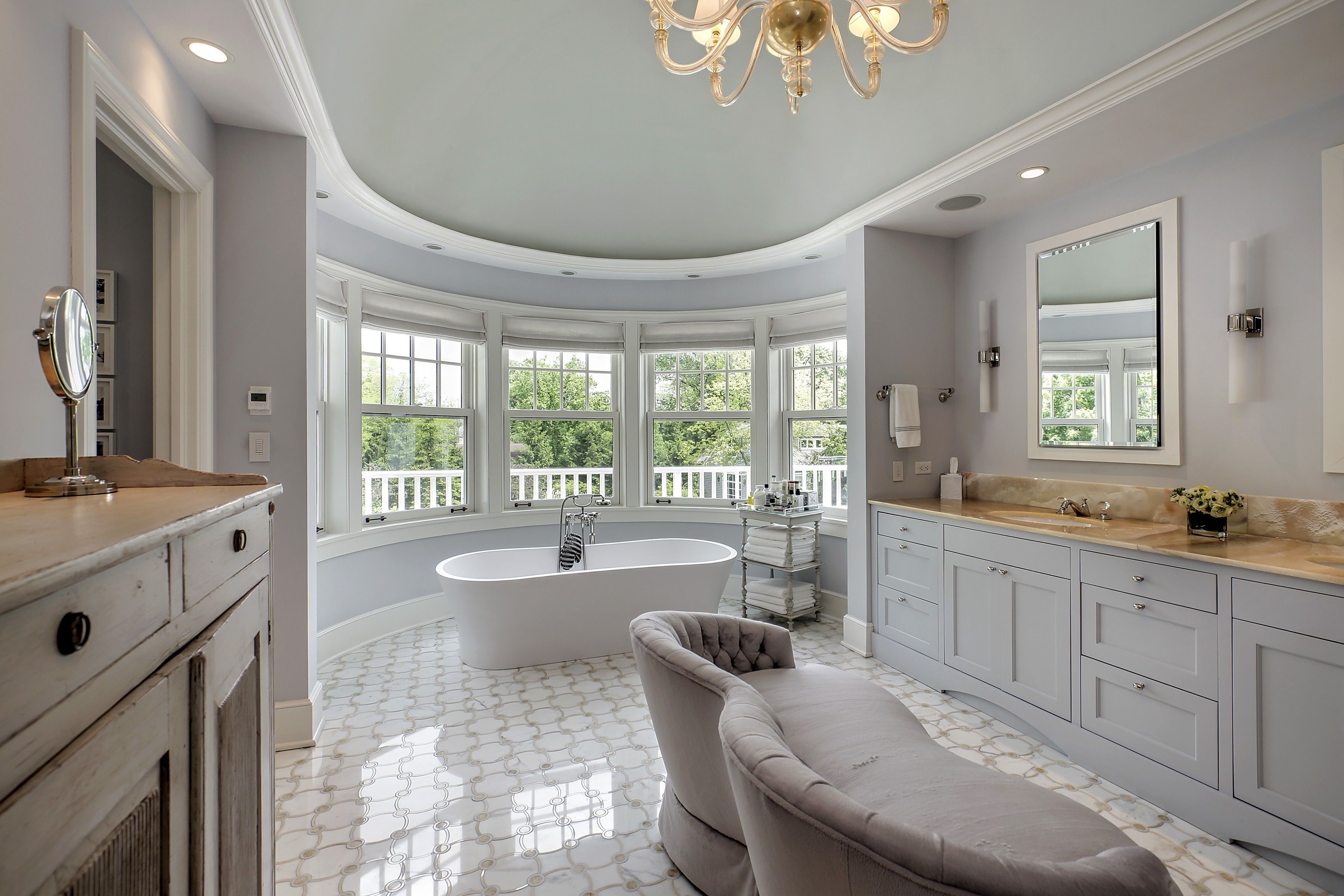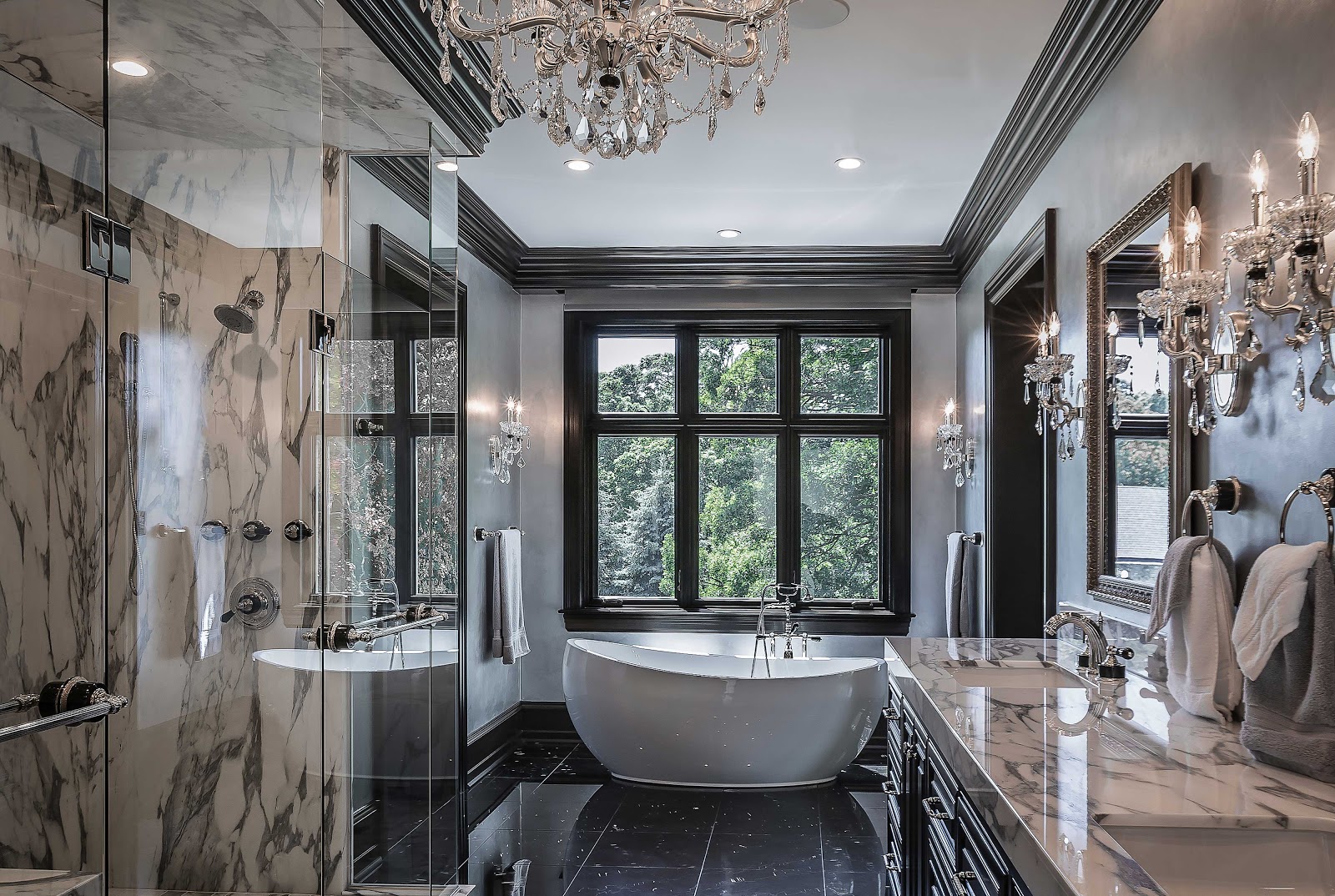Essential Elements of Simple Traditional Bathroom Designs

A simple traditional bathroom design prioritizes functionality and practicality while embracing classic aesthetics. This approach emphasizes timeless elegance and a sense of calm, creating a space that is both inviting and enduring.
Classic Bathroom Fixtures
The choice of fixtures is crucial in achieving a simple traditional bathroom design. These fixtures are the heart of the bathroom, providing both functionality and visual appeal.
- Vanities: Traditional vanities often feature solid wood construction, with intricate details like raised panels, carved moldings, and elegant hardware. They typically offer ample storage space with drawers and cabinets, providing a functional and aesthetically pleasing solution for storing toiletries and other bathroom essentials.
- Tubs: Freestanding tubs are a hallmark of traditional bathroom design. They offer a sense of luxury and relaxation, and their classic shapes and materials, such as cast iron or clawfoot designs, contribute to the timeless appeal of the space.
- Showers: Traditional showers often feature classic fixtures, such as showerheads with multiple spray settings and handheld shower wands. They can be enclosed in a shower stall with tiled walls and a glass door, creating a clean and elegant space.
- Toilets: Traditional toilets typically feature elongated bowls and classic designs, with options ranging from two-piece to one-piece models. They often feature a white or ivory finish, blending seamlessly with the overall aesthetic of the bathroom.
Simple Traditional Bathroom Layout
A well-designed layout is essential for creating a functional and aesthetically pleasing simple traditional bathroom. This layout emphasizes a sense of balance and flow, ensuring that the space is both practical and inviting.
A simple traditional bathroom layout can be achieved by incorporating a vanity with ample storage, a freestanding tub, and a separate shower stall.
The vanity can be placed against one wall, providing a focal point for the space. It should offer ample storage space for toiletries, towels, and other bathroom essentials. The freestanding tub can be positioned in a corner or against a wall, creating a sense of luxury and relaxation. A separate shower stall can be placed adjacent to the tub, providing a convenient and functional space for showering.
Creating a Serene and Inviting Atmosphere: Simple Traditional Bathroom Designs

A traditional bathroom design, while rooted in classic elegance, can also be a haven of tranquility. By carefully selecting color palettes, incorporating natural elements, and utilizing thoughtful lighting, you can create a space that is both aesthetically pleasing and profoundly relaxing.
Color Palettes and Patterns
Color plays a crucial role in setting the mood of a space. For a serene traditional bathroom, soft, muted tones are ideal. These hues evoke a sense of calmness and sophistication. Consider using a combination of neutral colors, such as whites, creams, and grays, as a backdrop, and then introduce pops of color with accent pieces, towels, or artwork. Popular color palettes for traditional bathrooms often include:
- Warm Neutrals: Cream, beige, and soft browns create a welcoming and inviting atmosphere. These colors are timeless and complement a wide range of design styles.
- Cool Neutrals: Whites and grays offer a clean and sophisticated look. These colors can be paired with subtle accents of blue or green for a refreshing touch.
- Earthy Tones: Soft greens, browns, and terracotta evoke a sense of nature and tranquility. These colors are particularly well-suited for bathrooms with natural light or views of greenery.
Patterns also play a significant role in traditional bathroom design. Classic patterns such as floral prints, damask designs, and geometric motifs add visual interest and depth to the space. However, it’s important to use patterns sparingly, avoiding an overwhelming or busy look. A subtle patterned wallpaper, a patterned shower curtain, or a patterned rug can add a touch of elegance without being too overpowering.
Incorporating Natural Elements
Bringing the outdoors in is a powerful way to create a calming and inviting atmosphere. Natural elements, such as wood, stone, and plants, add warmth, texture, and a sense of connection to nature.
- Wood Accents: A wooden vanity, a rustic-looking mirror frame, or a wooden shelf can add a touch of warmth and sophistication to a traditional bathroom. Wood can also be used for flooring, creating a natural and inviting feel.
- Stone Tiles: Stone tiles, such as marble, granite, or slate, add a touch of elegance and durability to a traditional bathroom. These tiles can be used for flooring, walls, or even the shower surround. The natural variations in stone create a unique and beautiful texture.
- Plants: Adding plants to a bathroom brings in a touch of nature and can help to purify the air. Consider adding a few low-maintenance plants, such as ferns, orchids, or succulents. Place them on shelves, windowsills, or even in hanging baskets.
Lighting, Simple traditional bathroom designs
Lighting plays a critical role in shaping the mood and ambiance of a traditional bathroom. The right lighting can create a sense of warmth, intimacy, and relaxation.
- Natural Light: Maximizing natural light is essential for creating a bright and airy atmosphere. Consider using large windows or skylights to allow in as much natural light as possible.
- Ambient Lighting: Ambient lighting provides overall illumination and sets the tone for the space. Use a combination of overhead lighting, such as a chandelier or pendant lights, and wall sconces to create a warm and inviting atmosphere.
- Task Lighting: Task lighting is essential for specific activities, such as applying makeup or shaving. Install vanity lights or mirrors with built-in lighting to provide focused illumination.
- Accent Lighting: Accent lighting highlights specific features, such as artwork, plants, or architectural details. Use recessed lighting or track lighting to draw attention to these elements and create visual interest.
